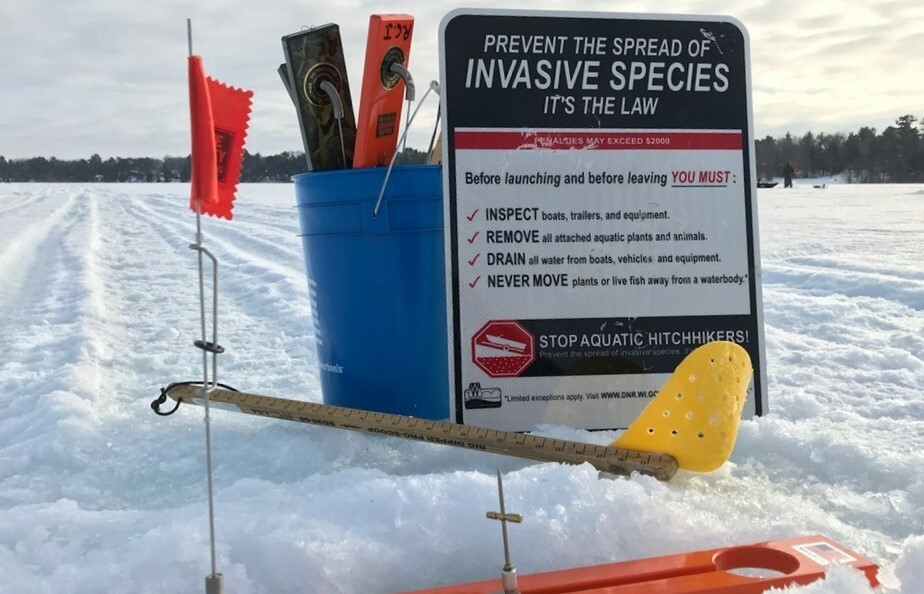|
FOR IMMEDIATE RELEASE: Jan. 18, 2024
Contact:?DNR Office of Communications
[email protected]
?
Protect Our Waters From
Aquatic Invasive Species This Winter
?
 Even during the winter, invasive species pose a risk to Wisconsin's water bodies. / Photo Credit: Wisconsin DNR
MADISON, Wis.?? The Wisconsin Department of Natural Resources (DNR) and UW-Extension are asking anglers to help prevent the spread of aquatic invasive species in Wisconsin?s lakes and rivers while fishing this winter.
Invasive species are non-native plants, animals and diseases that cause great ecological, environmental or economic harm. Aquatic invasive species can crowd out native plants and animals and threaten the quality of boating and fishing in Wisconsin waters.
Curly-leaf pondweed and Eurasian watermilfoil are aquatic invasive species that remain hardy under the ice in the winter, giving them an advantage over our native aquatic plants. The plant-like algae starry stonewort dies back for winter, but its tiny, star-shaped bulbils can be present on plants yanked up through the ice or in the mud that can come up if the bottom is disturbed by augers. Disease and the larvae of invasive snails and mussels can also be present in the water and mud in winter.
Because of the possible spread of diseases like?Viral Hemorrhagic Septicemia?that can threaten fish populations, buying minnows from a licensed Wisconsin bait dealer is important. Up to two gallons of water may be kept for minnows provided they will be used on the same waterbody or if no lake or river water from the fishing site(s) has been added. Dead bait must be preserved in ways that do not require freezing or refrigeration. Visit the DNR's?webpage on bait preservation?to learn more. Find more rules regarding bait in?the current fishing regulations.
A few minutes of preventative action can help preserve and protect waterways for future generations. Before stepping onto the ice or into a stream this winter, anglers should:
-
Inspect?fishing equipment for attached aquatic plants, animals or mud
-
Remove?all attached plants or animals
-
Drain?all water from buckets, containers and gear
-
Never move?live fish away from a waterbody (fish out of water = dead)
-
Dispose?of unwanted bait in the trash
In addition, the DNR encourages anglers to leave fishing gear where it can freeze for eight hours or more, as this will kill most species. Other methods to kill aquatic invasive species hiding in fishing gear are to steam clean the gear or to soak it in either 140? water or a bleach solution (2.44 tablespoons per gallon) for 10 minutes.
To learn more about invasive species and their impacts on Wisconsin's waters and economy, visit the DNR's?invasive species webpage.
|
